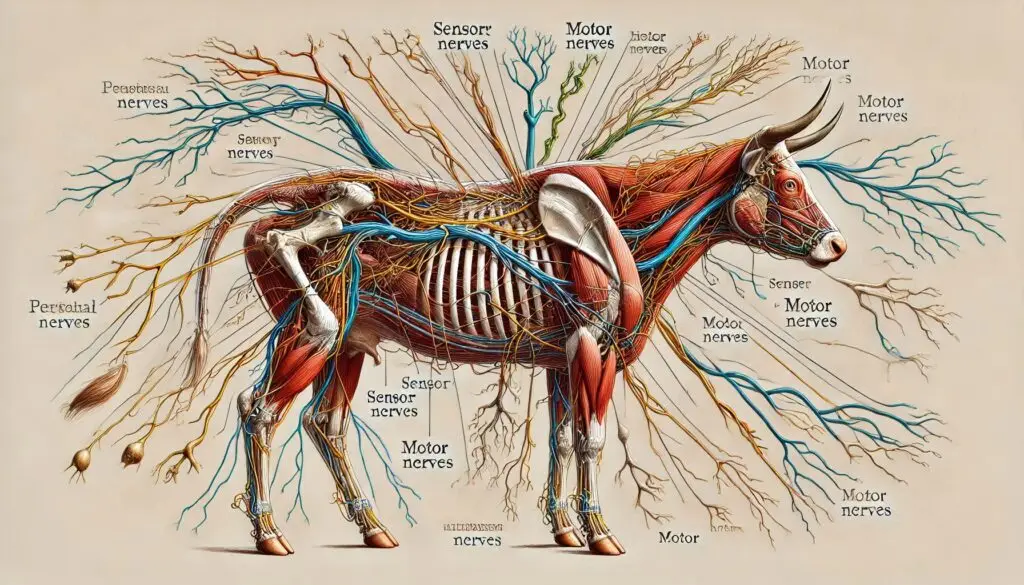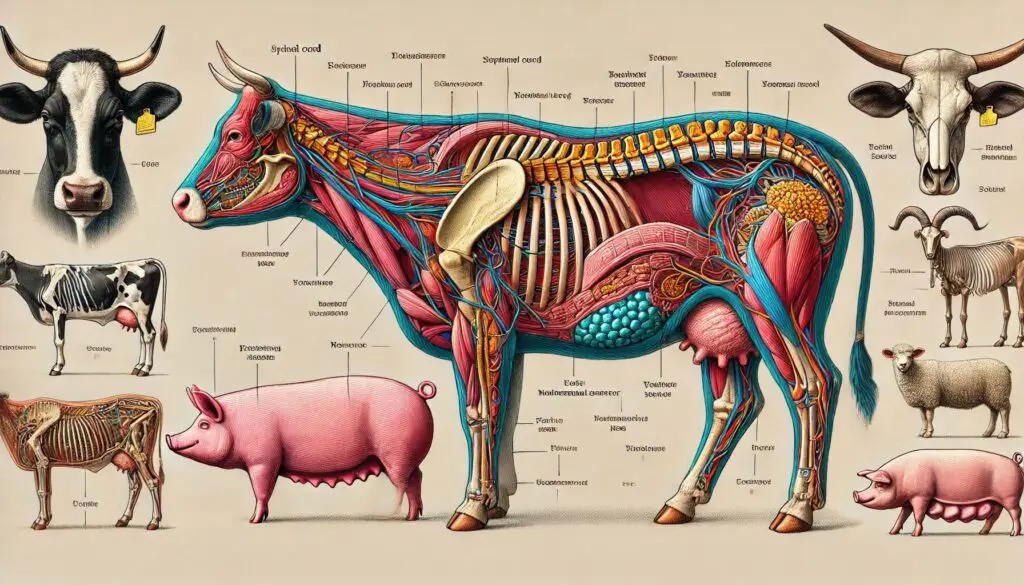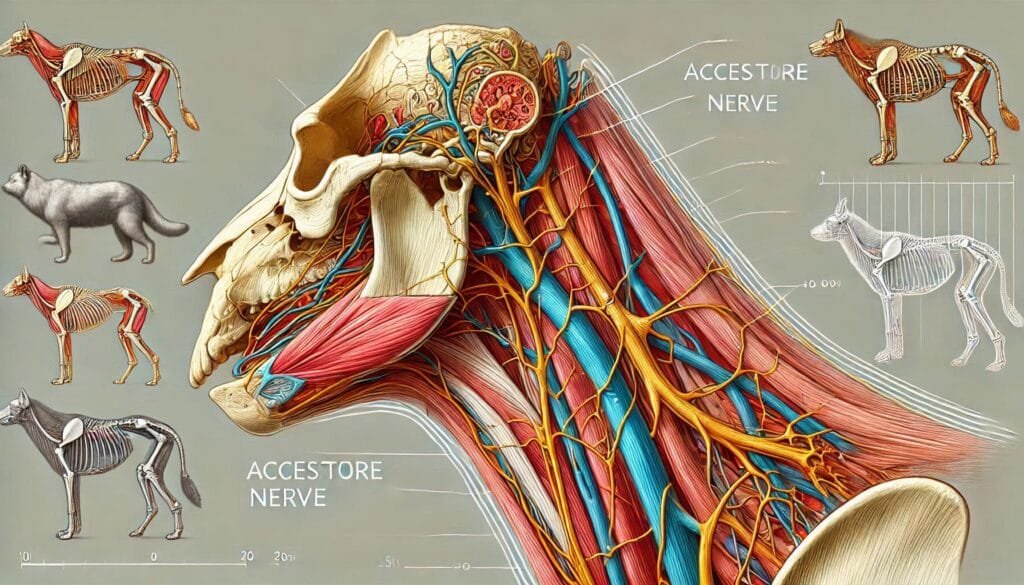Accessory Nerve (CN XI)

Introduction
The accessory nerve, known as cranial nerve XI (CN XI), is vital for motor control in both farm and domestic animals. It primarily innervates muscles that facilitate head and shoulder movements. Understanding this nerve’s anatomy and function helps veterinarians diagnose and treat related conditions effectively.
Importance of the Accessory Nerve
The accessory nerve is crucial for several reasons:
- It enables head rotation and shoulder elevation.
- It supports various activities such as grazing, running, and social interactions.
- Damage to this nerve can lead to significant mobility issues.
For a deeper understanding of cranial nerves, you can refer to resources like Merck Veterinary Manual.
Anatomy of the Accessory Nerve
Structure of CN XI
The accessory nerve consists of two main parts:
- Cranial Part: Originates from the medulla oblongata.
- Spinal Part: Arises from the upper cervical spinal cord (C1-C5/C6).
Both parts converge as they exit the skull through the jugular foramen. This unique structure allows CN XI to innervate specific muscles effectively.
Pathway of the Accessory Nerve
After exiting the jugular foramen, CN XI travels to its target muscles:
- It innervates the sternocleidomastoid muscle.
- It also innervates the trapezius muscle.
You can learn more about cranial nerve pathways at Veterinary Anatomy Online.
Functions of the Accessory Nerve
Motor Functions
The primary role of CN XI is motor control. It directly influences:
- Sternocleidomastoid Muscle: This muscle allows for head rotation and lateral flexion.
- Trapezius Muscle: This muscle is essential for shoulder elevation and scapular movement.
Movement Mechanics
The sternocleidomastoid muscle helps animals turn their heads to graze or observe their surroundings. The trapezius muscle supports lifting the front legs during movement or when interacting with other animals.
Behavioral Implications
The accessory nerve also affects behavior:
- Animals with intact CN XI can express social behaviors more effectively.
- Injuries may lead to reduced interaction or altered postures.
For more on animal behavior related to anatomy, visit Animal Behavior Society.
Clinical Significance of CN XI
Lesions and Injuries
Injuries to the accessory nerve can cause serious problems:
- Muscle Atrophy: Affected muscles may weaken over time.
- Functional Impairment: Animals may struggle with head rotation or shoulder elevation.
Common Causes of Injury
Several factors can lead to damage:
- Surgical Procedures: Surgeries involving cervical lymph nodes may inadvertently affect CN XI.
- Trauma: Accidents or blunt force trauma can injure this nerve.
Clinical Signs to Watch For
Veterinarians look for specific signs indicating potential injury:
- Asymmetry in shoulder height.
- Difficulty in turning the head or raising the shoulder.
For detailed clinical assessments, check out Veterinary Clinics of North America.
Diagnosis and Assessment
Veterinary Examination Techniques
Veterinarians use various methods to assess CN XI integrity:
- Physical Examination: Observing head movement and shoulder elevation.
- Resistance Tests: Checking strength against resistance during head rotation.
Diagnostic Tools
Advanced imaging techniques like MRI or CT scans can help visualize any underlying issues affecting CN XI. For more information on diagnostic methods, refer to American Veterinary Medical Association.
Treatment Options
If an injury is confirmed, treatment options may include:
- Physical therapy to strengthen affected muscles.
- Surgical intervention if there are structural issues causing nerve compression.
Prognosis and Recovery
Factors Influencing Recovery
The prognosis for recovery depends on several factors:
- The severity of the injury.
- The age and overall health of the animal.
Rehabilitation Strategies
Rehabilitation plays a critical role in recovery:
- Physical Therapy: Helps regain strength and mobility.
- Nutritional Support: Ensures proper healing through a balanced diet.
For more on rehabilitation techniques, visit PetMD.
Conclusion
Understanding the accessory nerve (CN XI) is essential for anyone involved in veterinary care for farm and domestic animals. Its role in motor control significantly impacts an animal’s mobility and behavior. Awareness of potential injuries can lead to timely diagnosis and treatment, improving outcomes for affected animals. By recognizing the importance of CN XI, we can better appreciate how it contributes to an animal’s overall well-being.
More from Veterinary Anatomy:
Symmetrical Twins






Responses